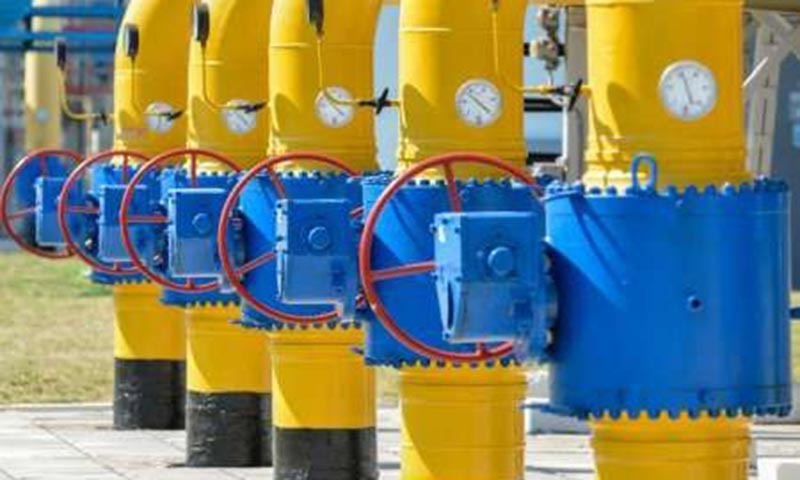ISLAMABAD: The controversy over unaccounted for gas (UFG) loss charges for liquefied natural gas (LNG) consumers — earlier restricted to official files — came out in the public on Friday as the vice chairman of Oil & Gas Regulatory Authority (Ogra) challenged a majority decision of his two colleagues reducing the burden of losses on consumers.
At the same time, the Sui Northern Gas Company Ltd (SNGPL) also alleged that the regulator’s decision was in contravention of the Petroleum Levy Ordinance and Cabinet decision. The company said it was challenging the decision at all appropriate fora. It said effectively, the Ogra had reduced the cost of UFG in re-gasified liquefied natural gas (RLNG) tariff to two per cent from existing 7pc.
With a majority decision, Ogra’s Member Gas Muhammad Arif and Member Oil Zainul Abideen Qureshi allowed UFG loss for fiscal year 2020-21 to SSGCL at 6.42pc (including 0.12pc of transmission loss). Likewise, UFG for SNGPL was worked out at 6.68pc (including 0.38pc transmission loss) on provisional basis.
However, Member Finance and Acting Chairman Ogra Noorul Haque, had disagreed with these percentages of loss to be used for provisional RLNG pricing and directed the Finance Department to ‘calculate RLNG price based on the majority decision of the authority for formal approval’, followed by notifications for four months.
SNGPL says sharp reduction in UFG target could jeopardise supplies
In a statement issued on Friday, Haque said the two members – on Oil and Gas – had reduced the UFG without the support and against the viewpoint of heads of relevant departments. He said the decision had provided about Rs3 billion financial benefit to private commercial and industrial consumers at the cost of public sector companies.
Talking about his dissenting note, Haque said Ogra’s Gas Department, being the parent concerned technical department, after reviewing the policy guidelines had proposed UFG rates to be used for provisional RLNG price based on actual UFG 10.67pc for the FY 2018-19 in case of SNGPL and 8.73pc for the 2019-20 in case of SSGC, to which acting chairman had agreed.
He said the UFG rate proposed by the two members was of provisional composite benchmark for indigenous gas, whereas for RLNG as per policy guideline the transmission and distribution have to be charged separately based on the actual last determined figure, being ring fenced activity
He said the actual average UFG in distribution system is 10.67pc in case of SNGPL and 11.6pc in case of SSGC. “Sui companies will be unable to recover actual UFG losses in accordance with policy guideline in cases where UFG rate applied in RLNG price is less than the actual rate,” he said, adding the public sector company will suffer huge financial losses at the benefit of private commercial and industrial consumers.
He said the Ogra had unanimously decided to appoint a consultant to audit the UFG as was also done in the past.
Haque said previously the Ogra had decided to charge the actual UFG on RLNG price strictly based on the interpretation of the policy guideline of June 27, 2016. “All the concerned professional heads of departments also had the same interpretation that actual UFG has to be charged in RLNG price and there was no dissent” and there was no change as of now.
He added that there was no disagreement in any department or professional executives who agreed that the actual UFG has to be charged to RLNG in accordance with the policy guideline of 2016.
The acting chairman said the member gas earlier proposed to charge 2.61pc UFG in case of SNGPL and 8.73pc in case of SSGC on the distribution network and finally reviewed his position and proposed to charge 6.3pc UFG on distribution network of both the Sui companies and no executive supported this.
The acting chairman has never insisted to allow the cost benefit to gas companies on the past practices neither he has proposed any rates to be charged to RLNG consumers. Rather he agreed with the UFG rates proposed by the Gas Department that are slightly different from the past practice, though these are based on the earlier interpretation of policy guideline.
ON the other hand, the SNGPL in a statement said the “recent RLNG price notification issued by Ogra is in contravention with Petroleum Levy Ordinance 1961 and against the Cabinet decision of allowance of actual UFG for RLNG pricing”.
It said the Ogra had imposed a unilateral decision of 6.3pc benchmark in isolation for distribution consumers only. It said the LNG had been declared as a petroleum product in consultation with Ogra while it had been determining prices of RLNG for last 5 years, in accordance with the specific formula approved as policy guideline by the Federal Government. “Ogra remains obligated to follow the government’s policy parameters” as also endorsed by the Supreme Court.
The company said natural gas consumers were subject to consolidated benchmark of around 7pc for both transmission and distribution consumers and no separate benchmark exist for each category of consumers. However, for RLNG consumers Ogra had assumed separate benchmarks of 0.38pc for Transmission and 6.3pc for Distribution, effectively reduced consolidated UFG benchmark of RLNG to 2pc only as against around 7pc for natural gas consumers.
It said the unsolicited intervention by Ogra may ender RLNG supply chain unviable and may jeopardise long term G-to-G LNG supply arrangements.
Published in Dawn, November 14th, 2020













































